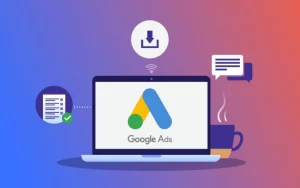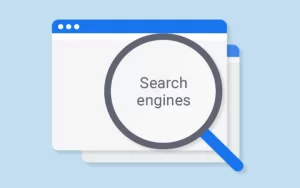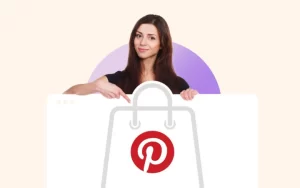The landing page, a vital part of the digital marketing landscape, is a simple yet powerful tool to guide a customer from exposure to a sale. This guide is not just about theory; it’s about practical suggestions and everything you need to know to build a landing page masterpiece. It’s designed to make you feel confident, in control, and empowered to apply the knowledge to your digital marketing strategy.
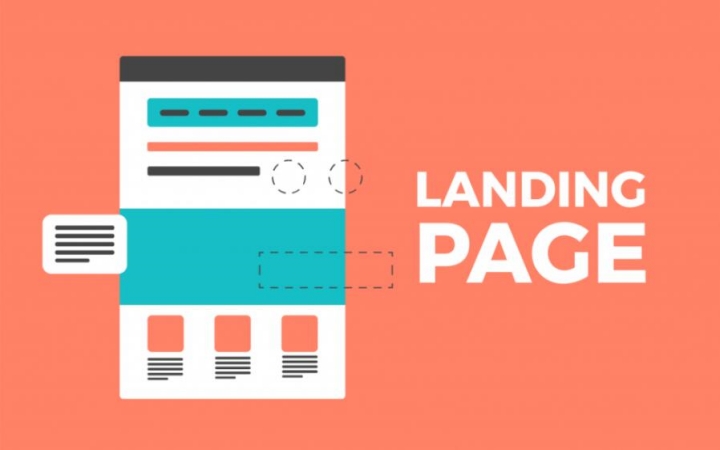
What Is a Landing Page?
A landing page is a simple and clever type of web campaign that has a page that is created on purpose. Other pages on the web might have many features, while a landing page only needs one, and that is a call to action (CTA). The most frequent CTA is to get the email addresses, but this could be a converter to a webinar or a purchase, too.
Key Features of a Landing Page
- Targeted Content: Landing pages are designed to steer the user right against an action call.
- No Disruptions: Unlike ordinary web pages, a typical landing page does not have menus, sidebars, or other extra links.
- Targeted Audiences: The landing page is designed to address the concerns and needs of a distinct audience segment.
Why Are Landing Pages Important?
Landing pages are extraordinary because they directly affect the efficiency of your marketing efforts. They provide huge credibility to the strength of your offers, such as eBooks. These pages put you in the driver’s seat of your marketing strategy, and that’s what makes them matter. They empower you and put you in charge, enlightening you about the power of targeted marketing.
Enhanced Conversion Rates
Landing pages are specially designed to convert. By offering only one CTA, they guide visitors to prioritize, whether enrolling in a newsletter, getting an eBook, or making a purchase. This process of guiding a visitor to take a specific action, known as ‘conversion, ‘is a key metric in digital marketing.
Collection of Data
Landing pages mostly make use of forms where you can, theoretically, make your visitors reveal such important information. Your audience’s valuable data can be utilized for upcoming marketing campaigns, customer segmentation, and personalization efforts.
Increased ROI
Your communication campaigns with higher conversion rates will result in a drastic improvement in your return on investment (ROI). ROI is a key metric in marketing, and landing pages can significantly increase it by improving conversion rates and making your marketing activities less time-consuming and more effective.
Types of Landing Pages
Lead Generation Landing Pages
What Are They?
Lead generation landing pages, also known as lead capture pages, have been improved to be tools for gathering user information. These forms usually ask for a person’s name, email, and phone number. Furthermore, these web pages usually have a form that visitors fill out, which gives them something valuable in return, such as an ebook, web annotation, or a free trial.
Key Tips
- Value Proposition: Define clearly what the visitor will get if they give away their information.
- Simple Form: eliminate unnecessary forms, which will reduce the barrier.
- Trust Elements: Utilize feedback, security badges, privacy statements, etc., to develop trust.
Click-through Landing Pages
What Are They?
Click-through landing pages are the pages that are targeted largely for your ad and your final conversion page in eCommerce settings. This particular setting of sale provides the visitor with a more elaborate product description, pricing, and benefits of a product so that they can be warmed up and later be able to click on a button that will invoke a purchase process.
Key Tips
- Clear CTA: Use attractive calls to action to drive visitors to the next top.
- Benefits Focus: Emphasize the main advantages and features of the product or service.
- Concise Copy: Be direct and brief in the message to the reader so that attention stays.
Sales Pages
What Are They?
Sales pages aim to convince visitors to buy a product. These pages are, for the most part, much longer and more detailed than simple pages that contain specific information about the products, customer testimonials, and several call-to-action buttons.
Key Tips
- Persuasive Copy: The usage of persuasive language and great storytelling provides the potential for engagement with the audience.
- Multiple CTAs: Use several call-to-action buttons throughout the page, each targeting different points of a prospect’s decision-making process.
- Social Proof: Build credibility by giving out testimonials, reviews, and case studies.
Squeeze Pages
What Are They?
The innate concept of squeeze pages is part of lead generation landing pages, with their main goal being focused on capturing the email addresses of the users. By the way, leads are quality customers who, if targeted correctly, will pull the trigger by making a single or multiple small purchases. Usually, these pages are very concise and get straight to the point. They offer some important rewards for getting the user’s details, such as a free PDF or discount.
Key Tips
- Captivating Headline: Start with an attention-grabbing heading to pique interest.
- High-Value Offer: Propose so irresistible that it becomes a must to acquire it just in exchange for an email.
- Minimalist Design: Try to eliminate the diversions as much as possible through a simple design of the site.
Splash pages
What Are Splash Pages?
Splash pages are displayed before the main site opens to visitors. They may outline details about the company or disclaimers about goods and services.
Main Thing
- Brief and Clear: Why keep the news so long explanatory?
- Colorful and Strong: Post the eye-catching images to get attention.
- Avoid Confusion: Have a navigation bar by which each visitor can move to the part of their liking.
Thank You Landing Pages
What Are They?
Thank you landing pages are displayed after visitors act, such as filling out a form or purchasing a product. These pages generally confirm the action and give them more information or completion steps.
Key Tips
- Confirmation Message: Say the user has been validated and thank the user.
- Next Steps: Give your users lots of links and options. They also provide options for sharing their experiences on social platforms or getting customer service through a community.
- Personalization: Use personalization features to show that you know and care about the user.
What Makes a Good Landing Page?
An effective landing page has several components that are to be joined to accomplish your marketing goals. The following are the key components:
Clear and Compelling Headline
The title should be brief and to the point. It should start with the feature and its attractiveness and then make clear the benefit of the offer. A good title will immediately draw the reader’s interest and also elicit the desired emotion, keeping the visitor wandering on the page.
Persuasive Copy
Let the caption develop by including the body part, which gives more information about the offer. Uses the sales pattern to stress the benefits and obliterate the potential issues. The copy should be as simple as possible and go straight to the point.
Strong Visuals
Available visual elements provide you with a better content discovery experience and enable your audience to interact with your message more effectively. They should relate to the product and reinforce your general message.
Trust Indicators
Utilizing trust indicators (such as customer reviews or trust badges) will help you with credibility and will make your customers trust you. Social proof is a powerful way to boost conversions.
Mobile Optimization
As mobile is a key traffic source, proper design and content optimization are essential. Test the web page on a wide range of devices to see if it displays and functions properly.
Simple and Efficient Form
It would help if you minimized the complexity of filling out each Form. If the Forms form is on the landing page, make it as user-friendly as possible. Additionally, a simple form will ask for only the necessary information and entertain the user.
Conspicuous CTA
A clear and compelling call to action is the most critical factor when motivating a site’s potential customers to take action. One of the typical pieces of advice for the feature part is its legibility. It is easy to read since the color used is red, and the font-weight is sharp. However, the button in the middle is not a simple edge ring but rather the CTA in full caps, which makes the focus easy.
How to Create a Landing Page
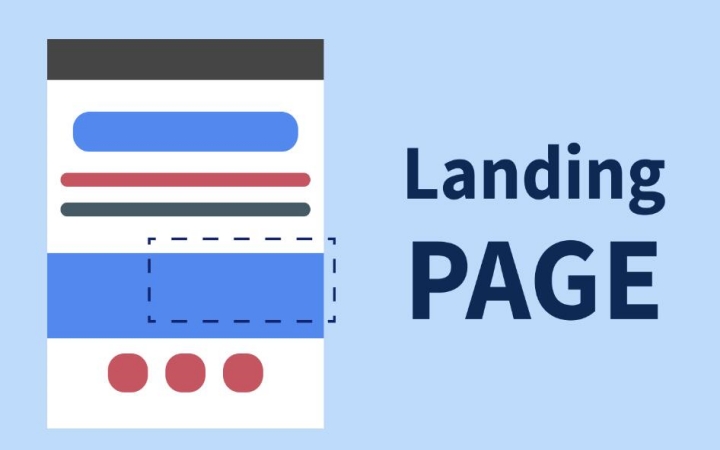
Developing a successful landing page involves some crucial stages:
Step 1: Identify the Person You are Targeting
Only design your landing page once you know who is the target audience you are focusing on. One idea for you can be:
- Who are they?
- What are their pain points?
- What solutions are they looking for?
To understand the audience, try to imagine yourself in their shoes. Tools like Google Analytics, customer surveys, and social media results can help you gain their point of view.
Step 2: Define Your Offer
Your landing page must convey what you are offering. Whether it’s a product, service, or subscription, you must make your offer the greatest it can be.
Key Tips:
- Unique Selling Proposition (USP): Spotlight the features of your offer and show potential customers how you are better than the rest.
- The Advantages, Not the Features: Make the main point of the selling page the ways your offer provides help to the customers. Do not just insert a list of “the functions.”
Step 3: Think Out the Eye-catching Title and Subtitle
Your headline is the first impression users get, so it needs to be eye-catching, catchy, and informative enough to make a user take further steps to review the rest of the offer. It should provide the headline with proper direction and briefly explain the value and the offer itself. You can then introduce a subheadline that provides a more detailed explanation.
Headlines and Subheadlines Hints
- Make them concise and straightforward.
- Use lively, strong verbs.
- Show clearly the benefit of it.
Step 4: Persuasive Imagery and Design
An attractive appearance is just one factor related to good design; it’s about convincing users to take action.
Key Tips:
- Visual Hierarchy: The practice of ensuring the most important text or information (like headings and calls to action) is the most noticeable. Size, color, and location to be used with care should be in the design strategy.
- High-Quality Images: You should use pictures that correspond to your offer, and that would be well-liked by your audience. Do not choose stock photos that have a generic feel.
- Consistent Branding: Your landing page must be the mirror of your brand’s picture, including being with the colors, fonts, and logos you have chosen.
Step 5: Write Convincing Copy
Putting up landing content that is persuasive and engaging and that addresses the wants and needs of your audience is the solution.
Key Tips:
- Focus on Benefits: Display how you can clear up their issues with your offer.
- Use Social Proof: Bring in customer testimonials, reviews, or performance metrics as evidence of your trustworthiness.
- Keep it Simple: The sentences should be free of jargon and be succinct to ensure transparency and readability.
Step 6: Create a Clear Call to Action (CTA)
The CTA part of your page’s design is undoubtedly the main point. It should be prominently displayed and tell visitors what action you want them to take. Take action verbs and push the visitor to do the action promptly.
Examples of Effective CTAs:
- Download Now
- Get Started Today
- Claim Your Free Trial
Step 7: Develop Your Privacy Policy and Trust Signals
Visitors have to feel secure on your website before they are ready to become leads. To build their trust, use trust badges together with a declared privacy policy, thus decreasing their anxiety.
Key Tips:
- Privacy Policy Link: You should include the link to the privacy policy close to the CTA so visitors would know that their data are stored securely.
- Trust Badges: Management may issue compliance certificates that display either the systems’ or applications’ trustworthiness.
- Testimonials and Reviews: Your clients can give you authentic positive feedback that you can utilize to build trust.
Step 8: Conduct A/B Testing
One of the benefits of A/B testing is its capability to compare two or more landing page versions and determine which one performs best overall or regarding the specific metric in question.
Key Tips:
- Test One ElementElement at a Time: The first piece of advice is to experiment with just one ElementElement of your landing page, let’s say, the headline or CTA, isolating its (their) effect.
- Gather Sufficient Data: You should have enough data available that you can use to make the right decision. Small sample sizes that are not large enough can give wrong results that are inaccurate of conditions.
- Iterate and Optimize: Use the knowledge and experience of your experiments to repair and improve the landing page all the time.
Step 9: Analyze and Iterate
Once your landing pages have been launched, starting with the measurement of their performance through tools such as analytics, you should further the talk. It would help if you looked at the metrics of the pages, namely the conversion rate, user engagement, and the time spent on that site.
Key Notes
- Keep It Simple: Sometimes, doing less is more effective. Refrain from bombarding your visitors with a whole lot of information and options.
- Focus on the Benefits: Ask yourself how your solution will make your customers’ lives easier and better, and then highlight the answer.
- Use Social Proof: People very much suggest that when they see testimonials and reviews from your past customers, they will be regarded as a credible source of information.
Tips for Optimizing Landing Pages
Conduct A/B Testing
A/B testing is an indispensable method for improving your landing pages. The technique involves comparing two variant pages, such as Version A and Version B, which have some small differences, to ascertain which one is far better regarding conversions.
The fundamental components to be tested are the following:
- Headlines
- CTA buttons
- Images and videos
- Form lengths
- Overall layout
One viable option you should consider is A/B testing, which Optimizely and Google Optimize will conduct for experimental purposes and data collection. Keep experimenting and changing the combinations until you discover the one that most effectively meets your audience’s requirements.
Analyze User Behavior
To optimize your landing page, it is essential to perceive how the users interact with the said page. Tools that can help, such as Google Analytics and Hotjar, can be utilized to track user involvement. A few of them may be listed as follows:
- Heatmaps showing where users click the most
- Session recordings to observe user navigation
- Scroll depth to see how far down the page users go.
- Bounce rates and exit points
One key benefit of analyzing this data is that you will be able to determine the most problematic points and the areas that need improvement. For instance, if users refuse to stay on the page before filling out a form, you should add something that either facilitates the data or attracts them beforehand.
Clear Value Proposition
A compelling value proposition that is clear and that immediately conveys what your product or service offers is the first step to a good landing page. Well, this is a common opening, but it is very strong and effective nonetheless. One of the important parts of a good value proposition is the headline and the sub-headline. Key components that make up a successful value proposition include:
- Clarity: Less jargon and a direct explanation of what you are offering are quite often helpful in communicating a service or product to customers.
- Relevance: Talk directly about the problems that the target audience might be facing and use specific case studies synced with their pain points and needs.
- Uniqueness: To say what differentiates your product from the others, you should focus on that.
- Desirability: Words that can most strongly persuade people to become interested in a certain product are commonly used to make the package more appealing.
A clear, purposeful promise makes it simple for prospects to count their blessings and inspires them to convert.
Focus on Benefits, Not Features
When crafting landing page text, make sure the emphasis is on the profit that your service or product brings to the subscriber rather than only mentioning its capabilities. The point of rational appeal is the solution to the supplier that gives the buyer “What’s in it for me?” the logical reason to buy, with the best guarantee of rapport with your audience.
For example:
- Feature: “Our software integrates with multiple platforms.”
- Benefit: “You can save time by using software that integrates all your tools in one place, so you can work faster and keep everything in one place. “
Emphasizing benefits can help potential customers see the real value of your offer and how it can better their lives or businesses.
Stay Consistent
The coherence of the design, the messaging, and the brand of your first pages and other marketing materials is the foundation of building trust and credibility. Make sure that:
- Your branding elements (colors, fonts, logos) are uniform across all platforms.
- Advertising copy and other promotional content are in line.
- The design does not overpower, and it is devoid of any extra elements that would negatively impact the navigation experience.
Consistency is the realization of a seamless user encounter and the strengthening of the brand identity, which results in more visitor conversions.
The Significance of Landing Pages in the Digital Advertising Industry
The Digital advertising ecosystem makes it necessary to deploy excellent landing pages. They work as the missing link between the marketing campaign and the resultant conversions. This is why they are so necessary:
Rise in Conversion Rates
Landing pages see much higher conversion rates when companies set focused goals and minimize extra things on a particular webpage that people do not need in contrast to general web pages.
Improved Ad Performance
When landing pages directly relate to the ads they are linked to, they improve the relevance and quality scores of your ads, increase success, and reduce costs per click.
Better User Experience
A page that’s crafted right will let people enjoy the content without feeling interrupted, resulting in a higher percentage of people enquiring about and being satisfied with the services.
User Data for Personalization
The landing page is a useful collection mechanism for user data, which helps segment and target the customer further.
FAQs
How many landing pages should I have?
The question of how many landing pages are needed is a free choice for those who work at the company and follow the marketing plans at that particular time. Nevertheless, it is generally good to make pages that are going to one very particular type of advertisement, customer, or offer. In the case of using them across different marketing channels, a specialized landing page will be more effective than one that is going to do many things at the same time.
Can I only use landing pages for paid advertising campaigns?
Definitely not. Landing pages can serve multiple purposes outside of paid advertising. These include email marketing, social media promotions, and organic search engine traffic.
Conclusion
The use of landing pages is considered one of the most adept methods that a marketer has in hand. It is associated with conversions and achieving marketing goals. You can greatly influence your campaign results by identifying which landing pages work best and regularly updating your techniques.
Is your marketing ready for the future? Kick off the creation of your perfect landing page now. One of your ways to success starts with only a thoughtfully designed landing page.
